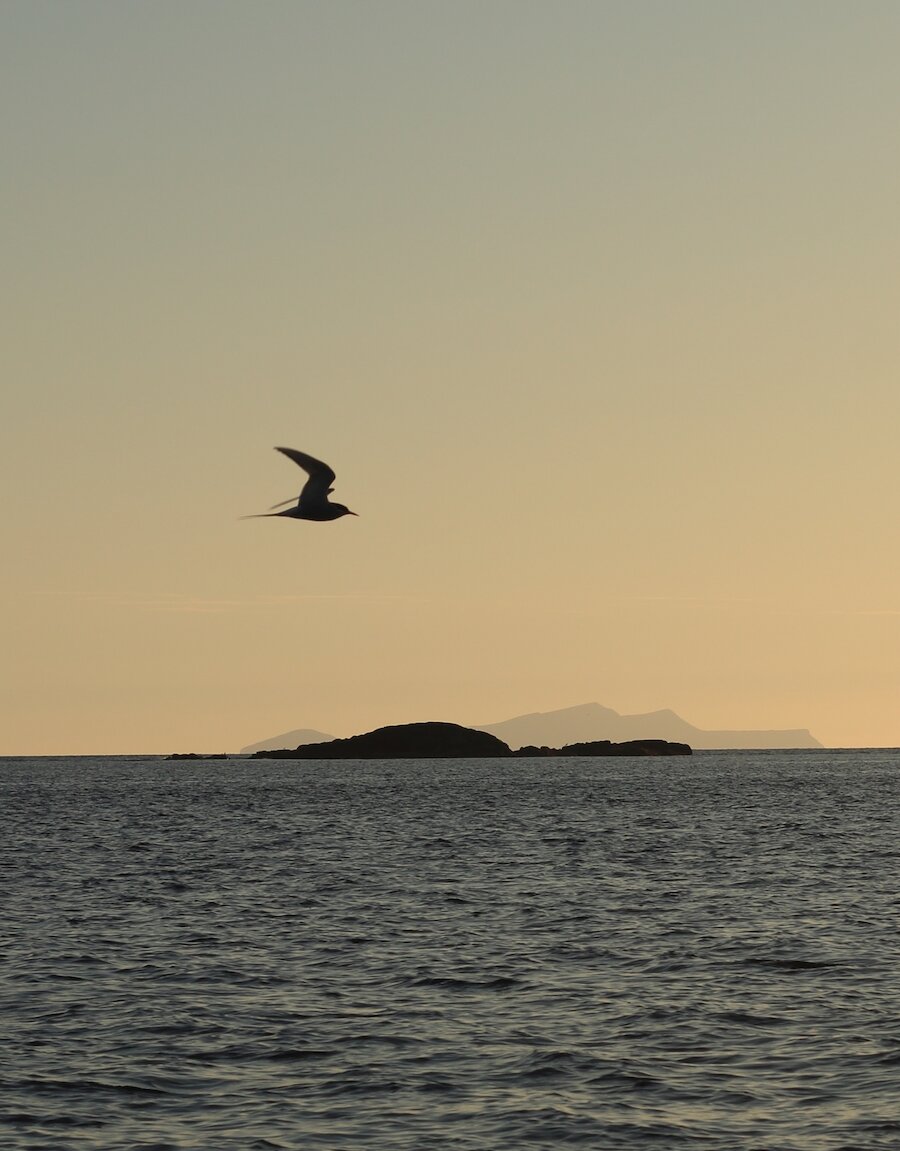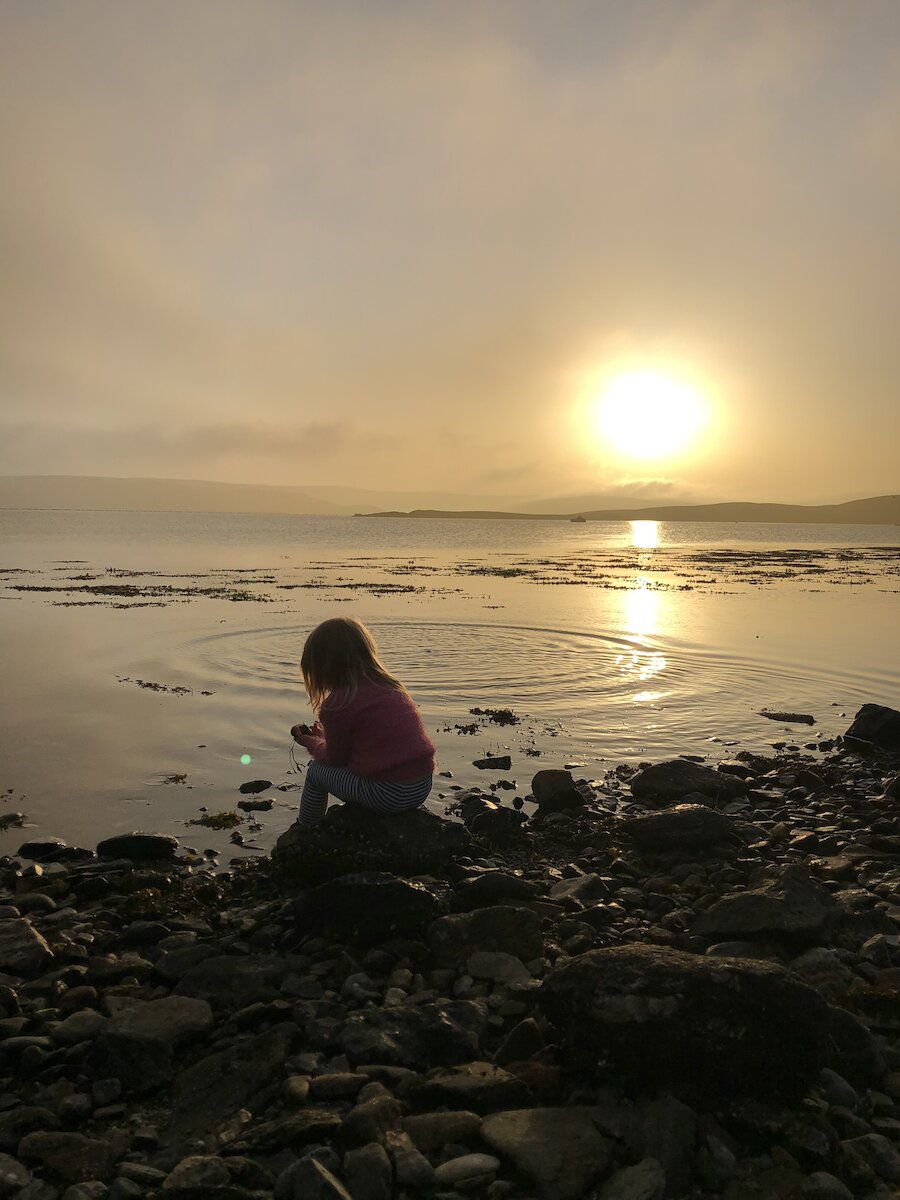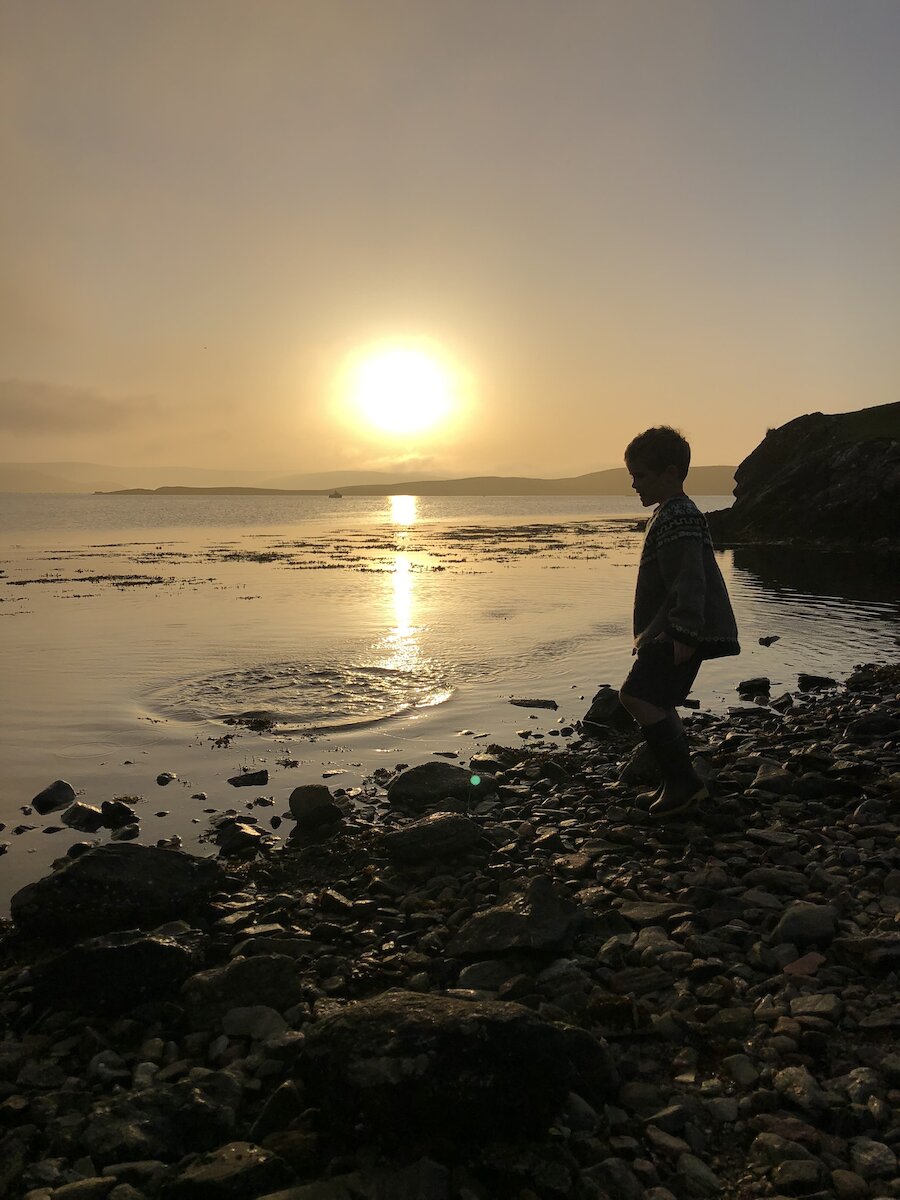To the Norse settlers in Shetland, midsummer was about Baldur, the god of light and son of Odin and Frigg who is celebrated as one of the best-loved gods of Asgard. The celebrations marked his death and observed the height of the sun’s power. Today we still celebrate the power of the sun, although thoughts of Baldur have mostly been forgotten as Christian traditions replaced the Norse influence.
The arrival of Christianity brought a whole new host of doctrines and religious observances to the isles including Johnsmas on the 24 June. J.R. Nicolson wrote that Johnsmas “contained much of the Old Norse practices of midsummer, although it had become Christianized by being dedicated to St John the Baptist.” On this night, bonfires would have blazed on hilltops as people celebrated the light and all that it gives.
In Unst, folklorist Jessie Saxby describes the midsummer celebrations of the Simmermill Foy [party]:
“This festival was one of the most important, and seems to have been what nowadays would be styled as a thanksgiving ceremony. The folk gave thanks for small, as well as great mercies. ‘Never ye mind,’ they would say if the fishing had been scanty, ‘da Lord will send some other kind o’ blessing some day’. Rogues of stones were piled, and on these were cast bones of fish and animals, peats, straw, seaweed, flowers, feathers, even a tet o’ oo [tuft of wool]. To these would be added the ormals [broken remains] of any household article with pells [rags]. On top of all was set a small wooden kapp containing a little fish oil. A glorious blaze would rise from that bonfire, and it burning to the foundation without any replenishment meant the best of all good luck.”
Johnsmas also marked the beginning of the summer herring fishery which saw hundreds of Dutch boats rendezvousing in Bressay Sound before the commencement of the summer fishery on 24 June. William Aberdeen describes between eight or nine hundred Dutch vessels on his 1766 map – a staggering number for such a small community.
J.R. Nicolson, who wrote an indispensable guide to Shetland Folklore, also describes a delightful tradition between courting youngsters. It says that a lad and lass would each pick a stalk of ribwort plantain, remove the tiny florets and wrap them in a dock leaf hidden under a stone. This ritual was always done in secret, at sunset. If the florets reappeared before the stocks withered, it was a sign that the couple would marry.



